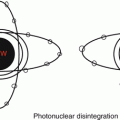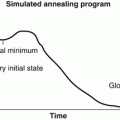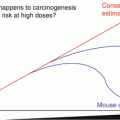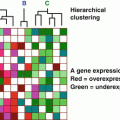, Foster D. Lasley2, Indra J. Das2, Marc S. Mendonca2 and Joseph R. Dynlacht2
(1)
Department of Radiation Oncology, CHRISTUS St. Patrick Regional Cancer Center, Lake Charles, LA, USA
(2)
Department of Radiation Oncology, Indiana University School of Medicine, Indianapolis, IN, USA
Definition of Cell Death
In radiobiology we usually refer to reproductive cell death.
Death is defined as loss of reproductive (“clonogenic”, “colony forming”) capability.
This definition is very relevant to a tumor. If tumor cells cannot reproduce, they are no longer clonogenically viable.
This is also relevant to rapidly dividing normal tissues such as those in the gut or bone marrow.
This is not so relevant to highly differentiated normal tissues that normally do not divide. For example, nerves and muscles are “dead” by this definition.
A cell with severely damaged DNA may grow and divide for a short time before becoming unable to divide.
This cell is reproductively dead. It is incapable of producing a colony in vitro or reestablishing a clone in vivo.
Mechanisms of Cell Death
Necrosis
Un-planned, un-organized cell death.
Random destruction of proteins and DNA.
DNA “smears” on a gel, no ladder.
Cell swells as it dies.
Cell membrane falls apart.
Highly pro-inflammatory.
May be caused by anything – trauma, heat, cold, hypoxia, oxidative stress, acid or alkaline pH, toxins, etc.
Apoptosis
The most common form of programmed cell death.
Also known as interphase death, to differentiate it from mitotic death.
Cell dies in an orderly and controlled fashion.
Controlled digestion of proteins and DNA.
DNA “laddering” can be measured.
Cell shrinks as it dies.
Cell membrane stays intact.
Cell breaks into membrane-covered “blebs” also known as “apoptotic bodies”.
No inflammatory response.
An important part of embryonic development.
For example, you have fingers because the cells in between your fingers underwent apoptosis.
Apoptosis occurs in response to radiation in some but not all cells.
Very radiosensitive cells like normal lymphocytes, lymphoma and neuroblastoma cells have a lot of apoptosis.
Very radioresistant tumor cells like melanoma and glioblastoma have no meaningful apoptosis.
Alternative forms of programmed cell death
Autophagy: Self-digestion with lysosomes, typically in response to nutrient deprivation.
Anoikis: Programmed cell death that occurs when cells are placed in an unfamiliar organ or tissue. Cancer cells must overcome anoikis to metastasize.
Cell Death After Irradiation
Mitotic Catastrophe (aka mitotic death)
This occurs when cells are unable to properly segregate their chromosomes during mitosis. Cell death occurs from massive DNA damage.
Mitotic catastrophe is caused by lethal DNA aberrations, which are caused by DSBs from irradiation.
Refer to Chapt. 19 for more details.
The DNA aberration is not lethal until the cell attempts mitosis, so there is a time delay between irradiation and mitotic catastrophe.
This is why it takes days to weeks for a tumor to regress after irradiation.
Senescence (cessation of cell cycle)
Cells remain intact but become unable to divide due to DNA damage. This makes them “reproductively dead” even though the cells are still there.
Senescence is a normal part of cellular aging but may also happen in response to injury, including radiation.
p16 and β − galactosidase are molecular markers of senescence.
Tissue Effects After Irradiation: When?
Apoptosis usually begins within 6–24 h after irradiation, however delayed apoptosis (several days) has also been observed.
Apoptotic bodies are rapidly degraded by bystander cells, so they quickly disappear.
Mitotic catastrophe usually happens within one to two cell cycles. (15 h to 2 weeks in actively cycling cells).
Necrosis may be observed for days to a small number of weeks after irradiation. At very high doses it may occur within hours of irradiation.
Late responses: Irradiated tissues may show changes months to years after radiation.
These changes may not be directly linked to cell killing.
Fibrosis, microvascular changes, chronic inflammation, decreased wound healing.
Molecular Pathways of Apoptosis
Apoptosis requires an orderly sequence of events to destroy the cell without causing any inflammation.
There are two major mechanisms to initiate apoptosis:
Intrinsic pathway of apoptosis is initiated by cellular stress or DNA damage.
ATM senses DNA damage and signals p53 which activates pro-apoptotic Bax/Bak/Bad. This leads to pore formation in the mitochondrial membranes.
Once the mitochondria become sufficiently porous, cytochrome c leaks out and activates Caspase 9, the intrinsic pathway initiator caspase
Stay updated, free articles. Join our Telegram channel

Full access? Get Clinical Tree








